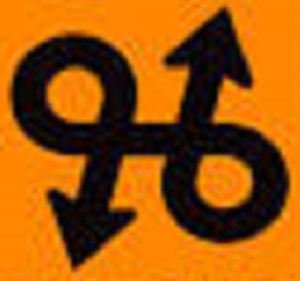Political Science Glossary [2]
Separation of powers
One of the most important of the basic principles that guided the framers of the US Constitution in their design for America’s future governance was the idea that the root cause and essence of tyrranical government is the concentration of control over all the powers and functions of government in the hands of the same individual or narrow political faction. The corollary the Framers drew from this was the separation of powers principle: that free popular government can best be sustained by dividing the various powers and functions of government among separate and relatively independent governmental institutions whose officials would be selected at different intervals and through different procedures by somewhat different constituencies so as to make it unlikely that the same small faction could gain control of them all at the same time. Thus, in the American federal republic the Framers designed, “the power surrendered by the people is first divided between two distinct governments [the Federal government and the governments of the several states], and then the portion allotted to each subdivided among distinct and separate departments [the executive, the legislative, and the judicial].” [Madison, The Federalist #51]
The idea that concentrated political power is a mortal danger to civil liberties and popular rights remains to this day one of the most persistent and characteristic features of American ideologies and popular thinking about politics. In comparison with other advanced industrial countries, the United States possesses one of the most complex governmental structures and perhaps the most broadly diffused distribution of governmental authority among independent agencies. Not only do American governmental arrangements still allocate power to separate executive, legislative and judicial branches at both the state and federal levels, but they also feature a great variety of forms of relatively autonomous and geographically overlapping governmental bodies at the local level — including not only general purpose county and municipal governments but also a wide variety of functionally specialized mini-governments such as elected district school boards, flood control district boards, water resource planning boards, transit authority boards and the like.
Checks and balances
A fundamental principle undergirding the design of American government is that of the separation of powers, which prescribes the parcelling out of the various powers and functions of government to separate and relatively independent levels and branches of the federal system in order to prevent their all being controlled at the same time by any potentially tyrannical political faction. But, to the way of thinking of the Framers of the Constitution, the long-term survival of free popular government would require more than simply a purely formalistic separation of governmental functions and powers into completely independent organizational jurisdictions. Ambitious and unscrupulous office holders in one or another of the various branches and levels of government could be expected to encroach upon the powers and authority of the other branches and levels from time to time, and this would gradually bring about a tyrannical concentration of powers unless the leaders in the other parts of the government could be given the necessary constitutional means and personal motives to resist the encroachments of the others. “Ambition must be made to counteract ambition. The interest of the man [the officeholder] must be connected with the constitutional rights of the place.”
From this the Framers concluded there was a need for the Constitution to include a built-in set of “checks and balances” — the necessary legal weaponry for each branch to defend itself against encroachments on its independence and authority by the others. In most cases, this contervailing power is purely negative, usually taking the form of some special constitutional grant of authority for one branch to say “no” to at least some of the specific decisions of the other branches in their own fields of specialization and then make it stick. (Some examples: The two houses of Congress may finally agree on a compromise to pass or repeal a law, but the President can veto it. President and Congress can agree on passing a law, but if the federal judiciary declares it to be unconstitutional the courts will refuse to treat the law as valid or enforceable. The courts can issue orders and injunctions for particular individuals to act or refrain from acting in particular ways, including public officials, but the power of the law enforcement agencies in the executive branch is needed to enforce them if the individuals in question decide to disobey. The Congress cannot control the way a judge will rule in a particular case before him, but Congress has the power to define and redefine the jurisdiction of the various federal courts. The President has general supervision of the conduct of foreign policy and military policy, but his treaties must be ratified by the Senate before they enter into force, and only Congress can appropriate public money to pay for such things as the raising of an army or the dispensing of foreign aid.) Under the system of checks and balances, each branch has primary authority to decide on certain kinds of issues, yet each branch often requires at least minimal voluntary cooperation from the other branches if its decisions and initiatives are to be successfully implemented. Since officeholders are assumed to be ambitious and jealous of their authority, policy cooperation and coordination across the various branches and levels of government can only be the product of hard bargaining and mutually acceptable delineation of authority — therefore hopefully sustaining the constitutional separation of powers through maintaining a practical balance of power among rival powerholders. And since by virtue of the differing compositions of their constituencies the leading officeholders tend to be responsive to somewhat differing interest groups within society, the need for negotiated compromises among the various branches and levels of government in order to implement policy may also translate into a policy-making process that takes seriously into account the interests of many minorities along with those of majorities.
Criticisms of the separation of powers and checks and balances concepts point out that such arrangements make policy making more cumbersome and time consuming than it needs to be and that in fact it can result easily in a deadlock in which government is unable to take any action at all. Moreover, it is also said to be undemocratic, in that it places barriers to the absolute power of the majority to determine public policy by imposing on majorities the need to bargain with (and make concessions to) minorities that have managed to gain disproportionate influence on one or another branch or level of the federal system of multiple governmental institutions. For these reasons, political thinkers who see government as the primary instrumentality for the community to successfully combat or adjust to an on-going series of emergencies that have no other possible remedy tend to be very suspicious of such decentralized power arrangements. On the other hand, political thinkers that see society and the economy as largely self-regulating organisms that need relatively little in the way of new policy initiatives from government for their successful functioning tend to take a more favorable view of checks and balances.
Liberalism
1. A 19th century political viewpoint or ideology associated with strong support for a broad interpretation of civil liberties for freedom of expression and religious toleration, for widespread popular participation in the political process, and for the repeal of protectionist legal restrictions inhibiting the operation of a capitalist free market economy.
2. In the 20th century US, the term has come to describe an ideology with similar views on civil liberties and personal freedom issues but now supporting a much stronger role for government in regulating and manipulating the private economy and providing public support for the economically and socially disadvantaged, though still stopping well short of full socialism.
In Europe, the term liberalism is still used more in its 19th century sense, and European liberals are rather more respectful of the values of the free market than their American namesakes, whose views sometimes more closely resemble those of Europeans styling themselves as social democrats.
Civil rights, civil liberties
The rights of every citizen to freedom of thought, freedom of conscience, freedom of expression, freedom of movement, freedom to enjoy privacy and autonomy in the management of one’s personal affairs, freedom of private individuals to associate voluntarily and to form organizations for pursuing common purposes, and freedom to participate politically in ways that do not infringe upon the similar rights of others. Although the two terms overlap considerably in ordinary usage (and are often difficult to distinguish in concrete instances), the term civil liberties generally refers more specifically to the protection of the individual’s rights to form and express his or her own preferences or convictions and to act freely upon them in the private sphere without undue or intrusive interference by the government, while the term civil rights emphasizes more specifically the individual’s rights as a citizen to participate freely and equally in politics and public affairs in order actively to promote his/her preferred public policy alternatives through lobbying policy-makers and/or through personal participation in the electoral process. Thus, civil liberties may be seen as the logical correlates of the goal of limited government, while civil rights are the logical correlates of the goal of popular or democratic government.
Libertarianism
A contemporary 20th century political viewpoint or ideology derived largely from 19th century liberalism, holding that any legitimate government should be small and should play only the most minimal possible role in economic, social and cultural life, with social relationships to be regulated as much as possible by voluntary contracts and generally accepted custom and as little as possible by statute law. In other words, libertarians believe that the individual should be as free as is practically feasible from government restraint and regulation in both the economic and non-economic aspects of life. Thus, libertarians endorse stricter respect for private property rights, the establishment of a more laissez-faire capitalist economic system, rigorous separation of church and state, and greater respect for individual rights to freedom of expression and freedom of choice in personal lifestyles. They oppose government programs for the redistribution of income, the inculcation of “politically correct” values through government schools and propaganda outlets, all forms of government-imposed censorship, the imposition of criminal penalties for the commission of “victimless crimes,” and in general all forms of social, economic or cultural “engineering” by the government.
Laissez-faire
Literally, French for “Let do.” The classical liberal (and modern libertarian) doctrine that the economic affairs of society are best guided by the free and autonomous decisions of individuals in the marketplace, to the near exclusion of government interference in economic matters. That is, the doctrine that government should almost always leave people alone and let them do as they please, so long as they respect the personal and property rights of others.
A Glossary of Political Economy Terms by Dr. Paul M. Johnson





![Political Science Glossary [2]](https://www.vietthuc.org/wp-content/uploads/2014/03/2014-MAR-11-VN-WAR-A300-90x60.jpg)
![Political Science Glossary [2]](https://www.vietthuc.org/wp-content/uploads/2014/03/2014-MAR-12-Det-may-300-90x60.jpg)









































